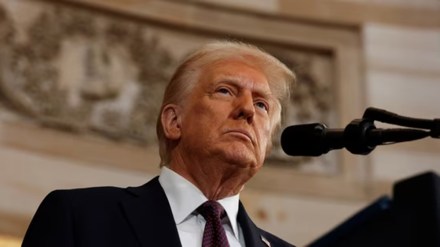By N Chandra Mohan
US President Donald Trump is doubling down on his disruptive tariff agenda despite facing a major setback with the US Court of International Trade (CIT) ruling that he overstepped his authority to impose sweeping global tariffs. However, this landmark judgment — which has been paused by an appeals court — does not impinge on his ability to impose sectoral tariffs under Section 232 of the US Trade Expansion Act of 1962 on steel and aluminium or autos and plans to do the same for pharmaceuticals and semiconductors on national security grounds. He has now increased levies on imported steel and aluminium to 50% from 25%. These are challenging times for India and the global economy as prospects for a full-blown trade war have only risen.
Trump is unfazed by the US judiciary’s pushback, which also includes a separate ruling by a federal judge in Washington declaring a number of tariffs unlawful. The CIT observed that the federal law did not grant him “unbounded authority” to impose tariffs on nearly every country of the world. Before Trump 2.0, no US president had invoked provisions of the International Emergency Economic Powers Act (IEEPA) — intended to address “unusual and extraordinary” threats during a national emergency — to levy such duties. Tariffs are not part of this 1977 law. The CIT also said that the US Constitution provides the Congress exclusive authority to regulate trade with other nations, which is not overridden by his invocation of national emergency powers.
While the fate of the CIT’s historic ruling will be decided by the US Court of Appeals for the Federal Circuit in Washington and perhaps by the Supreme Court, Trump’s tariff agenda will progress with other legal bases. Section 122 of the Trade Act of 1974 allows him to impose tariffs of 15% for only 150 days to address the country’s balance-of-payments deficits. Trump can also take recourse to Section 338 of the Tariff Act of 1930 if US businesses suffer from unfair discrimination. Tariffs are capped at 50%. This overlaps with Section 301 of the Trade Act of 1974 which allows the United States Trade Representative to impose tariffs on countries that violate existing trade agreements. The Congress can also grant him exclusive powers on tariffs.
The fact that the US President is not backing down is bad news for India which is scrambling to ink the first tranche of a bilateral trade deal. At a time when crucial bilateral negotiations are underway, the higher levies on steel and aluminium — which take effect on June 4 — will adversely affect India’s exports of these commodities that amounted to $4.56 billion in FY25. India has already issued a notice at the World Trade Organization of its intentions to impose retaliatory tariffs in response to the earlier steel duties of 25%. But the US has rejected this notice stating that its Section 232 tariffs were not safeguard measures but related to national security. It remains to be seen how India responds to the higher sectoral tariffs of 50%.
As challenges to the CIT’s ruling winds its way through the US legal system, India nevertheless has breathing space to reassess its strategy to strike a deal that is currently being negotiated under fire. Trump is not making it any easier with gratuitous statements that India has “offered a deal where basically they are willing to literally charge us no tariffs”. That is far from being the case although India has offered deep cuts in levies to provide greater market access for US goods while seeking to retain high tariffs on sensitive farm and dairy products. There is a need for similar strategic intent to ensure that we retain policy space on non-tariff barriers like licences, standards including quality control orders, and intellectual property rights. Taking lessons from our free trade agreement with the UK, there is no need to agree to rules that weaken our patents regime that threaten industry’s ability to produce affordable generic drugs.
Although reports indicate that a deal is likely before June 25 — with US officials expected to visit India in this regard — there is no warrant to hasten our negotiations. We must diversify our trading relationships with other major powers like the European Union and reconsider joining mega regional groupings like the Regional Comprehensive Economic Partnership.
There is no upside for India with the prospect of an all-out trade war between two of the world’s biggest powers. Although talks between the US and China in Geneva rolled back some of the highest tariffs of 145%, Trump has now accused the dragon of violating this agreement. Only talks between him and China’s leader Xi Jinping can dial down tensions. The dangerous spike in trade policy uncertainty negatively impacts trade, raises inflation, and lowers global growth. Assuming the global tariffs introduced under the IEEPA are invalidated, thanks to the CIT, Trump’s tariff bluster and foreign retaliation till end-May take average US levies to 7% — the highest since 1969 — according to Budget Lab at Yale University. These may be lower than the levels of the 1930s but the ominous portends are there with Trump being undeterred by the courts.
The writer is an economics and business commentator based in New Delhi.
Disclaimer: Views expressed are personal and do not reflect the official position or policy of FinancialExpress.com. Reproducing this content without permission is prohibited.
